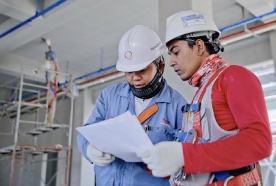In the realm of construction projects, time is an invaluable resource, and delays can wreak havoc on budgets, schedules, and relationships. One of the more complex and contentious issues that can arise in construction projects is concurrent delay. This term refers to a scenario where multiple delays, caused by different parties or factors, overlap and contribute to project setbacks. Navigating concurrent delays and resolving the conflicts they create is a daunting task that requires a clear understanding of the legal, contractual, and practical aspects of construction management. In this blog post, you will delve into the intricacies of concurrent delay, explore its causes and impacts, and discuss potential methods for resolving these conflicts.
Understanding Concurrent Delay
Concurrent delay unfolds when two or more distinct delays converge within the timeline of a construction project. This convergence introduces complexities in ascertaining accountability and comprehending the repercussions of the ensuing bottlenecks. Such delays may emerge from diverse origins, including unfavorable weather patterns, alterations in project designs, labor conflicts, or unexpected site conditions. The intricate nature of concurrent delay emanates from the amalgamation of these multifarious triggers, resulting in the challenging task of assigning sole responsibility for the project’s postponement. In essence, it becomes an intricate puzzle with intertwined pieces, defying a straightforward attribution of culpability.
Causes and Impacts of Concurrent Delay
Concurrent delays can emerge from various quarters, encompassing both the owner and the contractor, and can swiftly weave a complex tapestry of accountability. For instance, a construction firm might grapple with internal challenges like an insufficient pool of skilled labor, inevitably causing project delays. At the same time, the project owner might interject with design alterations, intricately entangling the project’s timeline even further. When these overlapping delays converge, the result is a cascading effect of setbacks, often initiating a domino-like chain reaction across subsequent project tasks. Consequently, the repercussions of concurrent delay ripple extensively, culminating in elevated expenditures, strained relationships among stakeholders, and contentious debates regarding who bears the liability for the impeded progress.
Resolving Concurrent Delay Conflicts
A comprehensive management and resolution of concurrent delays demand a nuanced strategy that encompasses contractual obligations, legal tenets, and pragmatic considerations. Navigating the intricate landscape of such delays necessitates a thoughtful blend of these elements. Here are several strategic avenues that can be harnessed to tackle the challenges posed by concurrent delays and pave the way for successful project outcomes:
Thorough Documentation
Prudent documentation of project activities, encompassing delays and their underlying causes, assumes paramount importance. This meticulously maintained record serves as a pivotal piece of evidence, instrumental in both addressing concurrent delay legal issues and unraveling their intricate origins and far-reaching consequences. In essence, it becomes a navigational tool for deciphering the intricacies of intertwined delays.
Contractual Clauses
Construction contracts often include provisions that outline how delays should be addressed and who is responsible for what. These clauses might define mechanisms for granting time extensions or adjusting compensation when concurrent delays occur.
Mitigation Efforts
Mitigating the repercussions of concurrent delay requires collaborative efforts from both parties. This collaborative approach could entail resource reallocation, schedule adjustments, and the exploration of innovative methodologies to steer the project back on its intended course. It’s a collective endeavor aimed at harmonizing the project’s trajectory amidst the challenges posed by concurrent delays.
Negotiation and Communication
Open lines of communication between the owner and the contractor are essential. Engaging in transparent discussions about the delays and their causes can pave the way for mutual understanding and cooperative solutions.
Dispute Resolution Mechanisms
In cases where disagreements persist, alternative dispute resolution methods such as mediation or arbitration can offer a less adversarial means of resolving concurrent delay conflicts.
Legal Recourse
If all else fails, legal action might be pursued. However, resolving concurrent delay disputes through litigation can be time-consuming and expensive, making it a less preferred option
Insights and Takeaways
Concurrent delays pose a significant challenge in the world of construction, as they can lead to extensive project disruptions and contentious disagreements between stakeholders. Understanding the nature of concurrent delays, their causes, and potential resolution methods is crucial for construction professionals aiming to navigate these complexities. By focusing on open communication, contractual clarity, and proactive problem-solving, parties involved in construction projects can strive to minimize the impact of concurrent delays and maintain successful project outcomes.
Header Image Source : https://www.pexels.com/photo/two-man-holding-white-paper-1216589/




